Pueblo II Artifacts
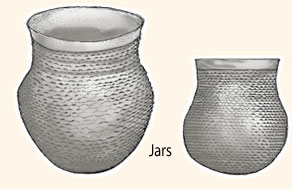
Pueblo II corrugated gray ware pottery. People during the Pueblo II period started making a new style of gray ware pottery, called "corrugated gray." Potters would scrape the clay coils smooth on the inside of the jar but not on the outside. Then they would pinch the outside of the coils with their fingers to create indentations and ridges, called "corrugations." |
|
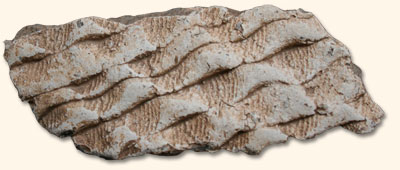
Can you see the fingerprints on this piece of broken corrugated pottery?
Because the clay was soft when they pinched the coils, we can sometimes see the fingerprints of the person who made the jar! |
|
Through experimentation, archaeologists have learned that corrugated pottery may be stronger than pottery that is not corrugated. Because gray ware jars were used for cooking and storage, making a stronger jar was an important technological advance. |
|
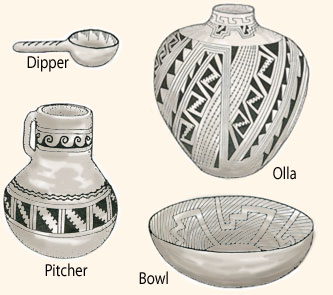
Pueblo II white ware pottery.
White ware pottery made during the Pueblo II period included bowls, jars, ollas, dippers, and pitchers. Most vessels were polished and had a white slip. The designs were painted in black. |
|
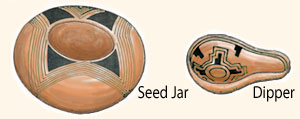
Pueblo II red ware pottery.
Pueblo potters in the western part of the Mesa Verde region still made red ware pottery. These vessels were traded throughout the region. |
|
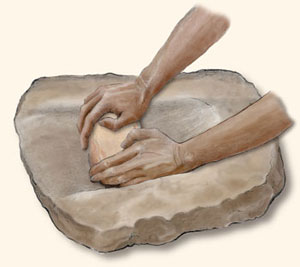
During the Pueblo II period, people continued to use two-hand manos and trough metates to grind their corn. |
|

They also used bows and arrows to hunt animals. |
|
One of the most exciting things about the Pueblo II period was the long-distance trading that took place throughout the Southwest. Much of this trade was centered on Chaco Canyon in New Mexico. But traded goods also made their way into the Mesa Verde region. Archaeologists have found macaw feathers and copper bells from Mexico, turquoise from ancient mines in New Mexico, and shells from the Gulf of California and Pacific coast. 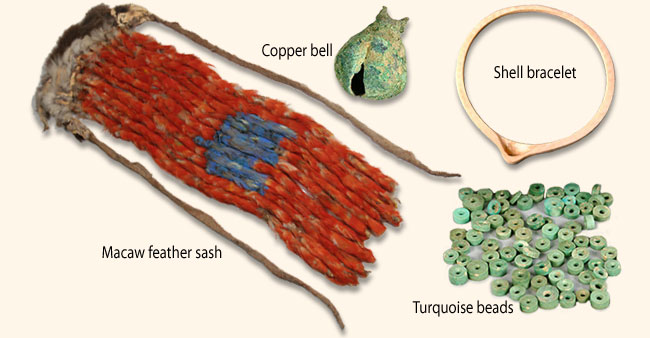 |
|
To manage so much trade, Pueblo people throughout the Southwest built large centers where people could gather to exchange goods and socialize. These important sites, which consisted of huge, multistory buildings, were connected by roads—some of them hundreds of miles long! |
|
 DONATE TODAY
DONATE TODAY
